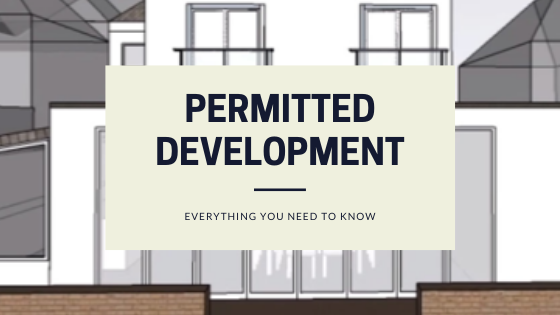
What is Permitted Developments?
Permitted Development Rights (PDR) are a set of planning rules that apply to certain types of properties throughout the UK. These rights allow homeowners to make certain changes to their property without needing to go through the formal planning permission process. This can include things like building extensions, rear dormers, new garages, and granny annexes, just to name a few. But what do these rights mean for you as a property owner, and how can you make the most of them?
First, it’s important to note that not all properties have PDRs. Restrictions on PDRs apply to land or sites which are commonly known as ‘designated areas’. These include, conservation areas, areas of outstanding natural beauty, historic monuments and listed buildings. If your property is located within or is part of a ‘designated area’, you should check with the local authorities website to check if an “article 4 direction” has been issued, prohibiting the use of PDRs in that area.
Additionally, other property types do not have PDRs either. These include but are not limited to; flats, maisonettes, or other residential building types. Similarly, commercial properties have different PDRs to residential properties.
So, what types of changes can you make to your property under PDRs? Common examples include:
-
Building a single-story extension to the rear of a house
-
Adding a dormer window to the roof
-
Building a porch
-
Converting a garage or outbuilding into habitable accommodation
-
Installing solar panels
-
Erecting a fence or wall
-
Putting up a satellite dish
It’s worth noting that there are specific guidelines that need to be followed when making these changes, such as the size and location of the extension, or the types of materials used. These guidelines can vary depending on the type of property and location, so it’s always best to check with your local authorities before beginning any work.
One question we get asked all the time is, what’s the difference between permitted development and planning permission? Critically, most people seem to think that PDR means you don’t have to declare the proposal to the council (unlike a normal planning application). While technically true, there are risks which can come back to haunt you.
For example, if the proposal does not sit within the PDR rules, and someone reports the development to the council, you will have to apply for planning permission, and hope it gets approved. Alternatively, should you come to sell the house, and the buyer’s property searches show you’ve built an addition without seeking formal approval from the council, you may be asked to provide retrospective approval.
So, is it worth taking the risk to make changes to your property under PDRs? Ultimately, it depends on your individual circumstances. If you’re planning on making a minor change that falls within the guidelines and isn’t located in a designated area, it might be worth giving it a go. However, if you’re unsure about whether your proposal falls within the guidelines or if you’re located in a designated area, it’s always best to seek formal advice from your local authorities or a professional planner.
Our advice would be to seek informal advice from your local authority, however possible, to see if your proposal does sit within the national rules. Alternatively, for more information, Arc Plan offers a FREE video conference with one of their designers, where you could seek more advice on PDR.
In summary, Permitted Development Rights can be a great way to make changes to your property without needing formal planning permission, but it’s important to be aware of the restrictions and guidelines that apply. By checking with your local authorities and consulting with professionals.






